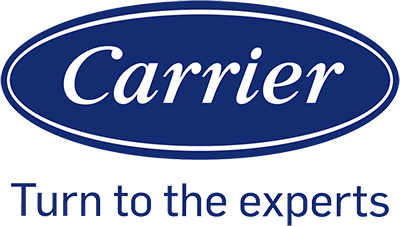Clean air ducts do more than improve indoor air quality-they also help lower energy use. When our duct systems stay clean, our heating and cooling equipment doesn’t have to work as hard, which means less wasted energy and lower utility bills. This simple connection makes duct cleaning an important part of maintaining an efficient home.
We often focus on the thermostat or the age of our HVAC system, but the ducts themselves play a major role in energy efficiency. Dust, debris, and buildup restrict airflow, forcing the system to push harder. That extra strain not only uses more power but can also shorten the life of the equipment.
By understanding how duct systems affect energy use, we can make smarter choices about maintenance. Clean ducts support steady airflow, reduce wear on the system, and keep monthly costs in check. This creates a clear link between regular duct care and long-term savings.
How Clean Air Ducts Drive Energy Savings
Clean air ducts reduce wasted energy, improve how the HVAC system runs, and help lower monthly utility bills. By removing buildup inside the ductwork, we allow air to move more freely and keep equipment from working harder than it should.
Impact of Debris on Energy Consumption
When dust, dirt, and other debris collect inside air ducts, airflow becomes restricted. The HVAC system must push harder to move air through the blocked passages. This extra effort increases energy consumption and shortens the lifespan of the equipment.
Even a thin layer of buildup can reduce efficiency. For example, clogged ducts may cause uneven heating or cooling, forcing us to adjust the thermostat more often. These small changes add up to higher energy use over time.
We also see that debris can trap moisture, which may lead to mold growth. Mold and dust together further block airflow and lower indoor air quality. Clean ducts remove these barriers, allowing the system to use less energy while delivering more consistent results.
Optimized HVAC Performance with Clean Ducts
A clean duct system helps the HVAC unit operate under normal conditions rather than under strain. When airflow is unobstructed, the blower motor does not need to run at maximum power. This reduces wear on moving parts and keeps the system in better condition.
Clean ducts also improve the balance of air distribution. Rooms reach the desired temperature faster, and the HVAC system cycles less frequently. Fewer cycles mean less energy wasted and less stress on components like the compressor and fan.
We can think of duct cleaning as preventive care. By keeping ducts clear, we reduce the risk of breakdowns caused by overheating or overuse. This ensures the system works as intended and avoids unnecessary spikes in energy consumption.
Reduction of Utility Bills for Homeowners
Lower energy use directly affects monthly utility bills. When the HVAC system does not fight against clogged ducts, it requires less electricity or fuel to maintain comfort. Homeowners notice the savings most during peak seasons of heating or cooling.
For example, in summer, clean ducts help the air conditioner cool faster without running constantly. In winter, the furnace delivers warm air more efficiently, so we spend less on heating. These improvements add up across the year.
The cost of duct cleaning can be offset by the reduction in energy expenses. A well-maintained system also avoids costly repairs, which further protects our budget. By keeping air ducts clean, we make the home more energy-efficient while keeping monthly bills under control.
Understanding the Duct System’s Role in Energy Efficiency

The duct system affects how well our HVAC system delivers heated or cooled air. Clean ducts, proper airflow, and sealed connections all influence energy consumption and system performance.
Airflow and Distribution Challenges
When ducts become blocked with dust or debris, airflow slows down. Restricted airflow forces the HVAC system to push harder to move air through the home. This can create uneven temperatures from room to room.
Leaks in the duct system also cause distribution problems. Air escapes before reaching the intended space, reducing comfort and wasting energy. Even small leaks can add up to large losses over time.
We can think of ducts as the highways for conditioned air. If those highways are narrowed or broken, the system cannot operate efficiently. Keeping ducts clean and clear allows air to move freely, which reduces strain and improves efficiency.
Consequences of Overworked HVAC Systems
When airflow is blocked or ducts leak, the HVAC system must run longer to meet the thermostat setting. Longer run times increase energy consumption and raise utility bills.
Overworked systems also wear out faster. Motors, fans, and compressors face greater stress when they run more often than designed. This increases the need for repairs and shortens equipment lifespan.
We also see comfort issues when systems overwork. Rooms may feel stuffy or take longer to reach the right temperature. By reducing unnecessary strain on the HVAC system, we save energy and extend the life of our equipment.
Importance of Duct Sealing and Insulation
Sealing gaps and cracks in the duct system prevents air loss. Proper sealing ensures that conditioned air reaches the living spaces instead of escaping into attics, basements, or crawl spaces.
Insulation is just as important. Without insulation, ducts lose heat in the winter and gain heat in the summer. This forces the HVAC system to run longer to make up for the lost energy.
Key benefits of sealing and insulating ducts include:
- Lower energy consumption
- Improved indoor comfort
- Reduced strain on HVAC equipment
By maintaining sealed and insulated ducts, we keep air clean, reduce waste, and improve overall system efficiency.
Benefits of Professional Duct Cleaning
When we schedule professional duct cleaning, we address more than just dust. Clean ducts improve indoor air quality, reduce strain on HVAC equipment, and help us avoid problems that come from incomplete or improper cleaning.
Enhanced Indoor Air Quality and Allergen Reduction
Dust, pollen, and pet dander often collect inside ductwork. When the system runs, these particles can spread through the air and settle on surfaces in our homes. Regular cleaning lowers the amount of debris that circulates.
Professional duct cleaning also helps reduce allergens that can trigger asthma or seasonal allergies. By removing buildup, we make the air easier to breathe and lessen the need for constant dusting. This creates a cleaner environment for everyone in the household.
Mold spores can also develop in damp ducts. Trained technicians use specialized tools to reach deep areas where mold may grow. Their equipment removes particles more effectively than what we could do with household vacuums.
Key benefits include:
- Lower dust levels in living spaces
- Fewer allergens in the air
- Reduced risk of mold growth
Extended HVAC System Lifespan
When ducts stay dirty, our HVAC system works harder to push air through. This extra strain increases wear on fans, motors, and filters. Over time, the added stress can shorten the lifespan of the equipment.
Professional duct cleaning removes blockages that restrict airflow. With fewer obstructions, the system runs more efficiently and uses less energy. This helps maintain steady performance without overworking the unit.
Clean ducts also protect components like coils and heat exchangers. Less dust means fewer chances for buildup that can cause overheating or reduced efficiency. By keeping the system cleaner, we help avoid costly repairs and extend the time before replacement is needed.
Comparing DIY and Professional Duct Cleaning
Some of us may try to clean ducts ourselves with a vacuum and basic tools. While this can remove dust from vents, it rarely reaches deep sections of the ductwork. DIY cleaning often leaves behind debris that continues to circulate.
Professional duct cleaning uses high-powered vacuums, rotary brushes, and negative air machines. These tools remove dirt and contaminants from the entire system, including areas we cannot reach on our own.
Another difference lies in inspection. Professionals check for leaks, mold, or damage during the service. This adds value because we gain information about the condition of our ducts and HVAC system.
Comparison Table:
| Aspect | DIY Cleaning | Professional Cleaning |
|---|---|---|
| Depth of cleaning | Shallow, surface only | Full system, deep cleaning |
| Tools used | Basic household tools | Specialized equipment |
| Ability to spot issues | Limited | Includes inspection |
| Long-term results | Short-lived | More effective, lasting |
Cost Considerations and Long-Term Value
When we look at duct cleaning, we need to weigh the upfront service cost against the potential savings on utility bills. The long-term value depends on how well the system runs after cleaning and whether we choose a reliable provider.
Evaluating Duct Cleaning Investments
The price of duct cleaning varies based on the size of the home, the number of vents, and the condition of the system. On average, homeowners may spend a few hundred dollars for a full cleaning. While this can feel like a large expense, it often reduces wasted energy and lowers monthly heating or cooling costs.
We should also think about how long the results last. Clean ducts can improve airflow, which means our HVAC system does not need to work as hard. Less strain on the system may extend its lifespan and reduce the need for frequent repairs.
A simple way to think about value is to compare cost and savings:
| Factor | Short-Term Impact | Long-Term Impact |
|---|---|---|
| Service cost | Immediate out-of-pocket fee | Spread out over years of use |
| Energy efficiency | Slightly lower utility bills | Noticeable monthly savings |
| HVAC wear and tear | No instant change | Fewer repairs and replacements |
By looking at both direct and indirect savings, we can decide if the investment makes sense for our home.
Choosing a Qualified Service Provider
Not all duct cleaning services deliver the same results. We need to check that the provider follows proper cleaning standards and uses equipment designed for HVAC systems. Companies that cut corners may leave dust behind or even damage ducts, which cancels out any potential savings.
It helps to ask for written estimates and a clear breakdown of services. A professional provider should explain what areas they will clean, how long it will take, and what results we can expect. Transparency makes it easier to compare options.
We should also verify credentials. Look for technicians certified by groups such as the National Air Duct Cleaners Association (NADCA). Certification shows they follow industry guidelines and know how to handle different types of systems.
By choosing a qualified provider, we protect our investment and increase the chance of seeing real improvements in energy efficiency and comfort.




